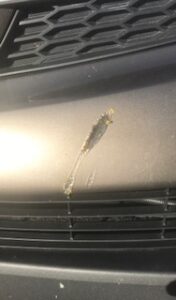Don’t Try This At Home
It was not until my mid-twenties that I began in earnest to read western classic literature. Growing up with undiagnosed dyslexia kept me from reading much of anything except comic books, Mad magazine, and newspapers—I was a paperboy for four years. For academic assignments I relied on the student’s best friend, CliffsNotes. It wasn’t until my early twenties that I discovered that I was not “slow of mind,” but that my brain/eye connections were malfunctioning when it came to reading. I just had a problem decoding language, so I decided to slow down and read for pleasure.

While in my Russian Literature phase, I was reading Dostoevsky’s major works, and my brother, Cris, happened to see me plowing through “The Idiot.” His comment was, “Hey Big Brother, when did you publish your autobiography?” Nothing like family to keep me grounded.
The word “idiot” may be offensive to some, but I use it here in the vein of “fool,” “ass,” and “knucklehead.” I am particularly fond of how the Irish spell and use the word “eejit.” Bonus points when elongating the “eeee.” Through the art of literary conjuring, the Irish have expanded such a word into an art form. “Eejit” is one of more than a dozen words used in good-natured insults, though there are a few pejorative uses that can incite brawls.
Recently Kay traveled to Spain and Portugal with friends and family while I stayed behind to do a play. Her car was sluggish when I started the engine the first few mornings after she was gone, and by the third morning the engine would not even crank. I had a dead battery. I could not deal with the issue right away because of my daily rehearsal schedule, but I knew I could take care of this. Now whenever someone says, “I got this,” be warned. The “eejit” demon lurks in the shadows waiting for the perfect moment for a surprise attack.
Once we opened the show I was able to give the dead battery my full cognitive powers. The morning was cold and frosty; the temperature in the low twenties, so I knew it would be more difficult to jump the battery. But, I’m in my “I got this” mode, and confidently pulled my car in front of Kay’s car, popped the respective hoods, and let my car warm up before attaching the cables. Jump-starting dead batteries is not something I do on a regular basis, but still I had done it before, and “I got this” could do it again.
 The battery posts on my car were easily marked positive and negative so I could attach the metal clamps on my jumper cables to the right connections on the battery. But when I looked at the battery in Kay’s car, it was not so marked. I looked and looked. Got a paper towel and wiped the thin sheen of grease and dirt away and still saw no plus and minus markers anywhere. She had a newer car and I was given her hand-me-down, but didn’t every car have these standard markings on their batteries regardless of the country of origin?
The battery posts on my car were easily marked positive and negative so I could attach the metal clamps on my jumper cables to the right connections on the battery. But when I looked at the battery in Kay’s car, it was not so marked. I looked and looked. Got a paper towel and wiped the thin sheen of grease and dirt away and still saw no plus and minus markers anywhere. She had a newer car and I was given her hand-me-down, but didn’t every car have these standard markings on their batteries regardless of the country of origin?
Now the wise person would have paused here and begun the process of thoughtful deductions: look at the manual in the glove-box (never crossed my mind), call the auto parts store and ask for help (no way), call the mechanic at our service center and ask for help (ditto), call a friend and ask for help (ditto, ditto), watch an instructional video on YouTube (ditto, ditto, ditto). Do you see a pattern here? Asking for help was not an option. Remember, “I got this.”
I took a step back, looked at the battery posts, then at the cable connections and I thought I have a fifty-fifty chance, so what could go wrong? Even if I blew it the first time I could just switch the metal cable connectors. There was no one around to watch me make an eejit of myself. I checked one last time for the markings on Kay’s battery, and when they remained elusive, I said, “I’m going in.”
When I touched the negative clamp of the cables to the post on the left of the battery, it sparked. For most people that should have been a sign to switch clamps. But not me. I interpreted such sparks as a sign that I had made the right choice. I was not going to let a little thing like sparks get in my way. If I just powered on, I could resurrect this battery back from the dead.
I clamped the cable connectors onto the posts, and jumped into the front seat of Kay’s car. Remember, it was a very cold morning and her windshield had frosted over. I had not bothered to scrap it off. Also, the hood of her car was elevated, and I could not see what was happening with the batteries. When I turned on the ignition, I got no response. Yes, it was cold and the battery was dead, but, at the very least, I expected the engine to give me some sign of life; a grumbling turn-over would have been encouraging. Weren’t those sparks a indication of an energy flow? I kept trying and nothing. Then I noticed a trail of smoke floating by the passenger side window. I thought it must be the condensation of exhaust fumes from my car, but burning rubber and melting plastic does not smell like exhaust fumes.
 I hopped out of the car, and to my horror, I saw smoldering cables and a dark spot on the ground between the vehicles where the melting cables had burned the grass. I dashed into my car to turn off the engine, and raced back and yanked the clamps off the two batteries. Then I looked at the front of each car and saw where the burning rubber cable had melted the plastic leaving a permanent scar on each bumper. I held up the clamps from the cables and saw the exposed copper wiring dangling from the clamps like the viscera of the central nervous system. Following the example of St. Peter, I called down curses upon myself in what can best be described as non-church language. I closed the hoods on each car, tossed the burnt cables into the trash, and accepted defeat.
I hopped out of the car, and to my horror, I saw smoldering cables and a dark spot on the ground between the vehicles where the melting cables had burned the grass. I dashed into my car to turn off the engine, and raced back and yanked the clamps off the two batteries. Then I looked at the front of each car and saw where the burning rubber cable had melted the plastic leaving a permanent scar on each bumper. I held up the clamps from the cables and saw the exposed copper wiring dangling from the clamps like the viscera of the central nervous system. Following the example of St. Peter, I called down curses upon myself in what can best be described as non-church language. I closed the hoods on each car, tossed the burnt cables into the trash, and accepted defeat.
There is no way to spin this to my advantage. I told my story to a room full of family seated around the table. After I finished, my grinning nephew responded, “You know, Uncle, people have gotten hurt by doing what you did.” I scoffed with a “I laugh in the face of death” wave of my hand. In the end, I had to involve two mechanics (one to replace the battery, the other to replace the blown fuses), and an auto parts store before I finally got it fixed. In my weak defense, the red “positive” cap on Kay’s battery had been pushed down below the platform, well hidden from view. But still…
One likes to make one’s wife proud of oneself. One likes to think of oneself as rescuer in times of trouble. At the very least, one likes to think of oneself as handy and useful when it comes to simple domestic tasks. But alas, for Kay, she is stuck with a husband who only knows the difference between stage right and stage left and is able to construct a few simple paragraphs to tell a story. And each time I look at the front bumpers on either car, the scars are a silent reminder that at any moment the earth could open up and swallow this “eejit” whole.


Your Honor, I present Exhibit A regarding the defendant’s “ee-jit-o-cy.” The courtroom gasps. His Honor slams the gavel for silence, and then booms out “Guilty!”

